Ever wondered what cruise ship crew life is really like or if working on ships is worth it? Keep reading to find out all the good and bad that comes with living at sea!
Working on cruise ships often sounds like a dream, and it definitely can be.
But there were also many times in my three-year career at sea where it honestly felt like a living nightmare.
If you’re considering a life at sea or you’re just curious about cruise ship crew life, here’s some information about the pros and cons from my experience as a pirate seafarer for your entertainment and/or research purposes.

My Experience Working on Cruise Ships
There are always advantages and disadvantages to every job and working on cruise ships is no different.
Cruise ship crew life can be intense: long hours, no days off for months, lots of rules, demanding guests, small living quarters and little to no privacy.
But working on ships also allows you to travel to places some only dream of while making some amazing connections with fellow seafarers from all over the world.
Despite all the ups and downs of ship life, I wouldn’t change a thing.
You can party all night over international waters, fall asleep to the sound of the ocean, and wake up in a completely different country.
You’ll often hear crew members joking that they’re never coming back; that this is their last contract.
But the truth is that more often than not, we somehow always come crawling back for just one more contract because once you get a taste for life at sea, living anywhere else isn’t the same.
I’ve had the chance to live on foreign land abroad in Japan and even on the ice in Antarctica.
Related: 7 Continents & 7 Seas: How I Got Paid to Travel the World
They were amazing experiences that were less physically demanding than ship life with better pay and fewer work hours.
But if given the chance to return to just one of my past lives in my journey across all seven continents and seven seas, I would go back to working on cruise ships without batting an eye.
My heart will always be at sea.
The Pros of Working on Cruise Ships
1. You get paid to travel
This is probably the biggest and most well-known perk of working on ships, and for good reason.
It is the ultimate work and travel job opportunity that has allowed me to travel to 35 countries, frolic on more Caribbean beaches than I can count, spend a month in the Mediterranean, sail through the Arctic Circle, dock in Russia all summer during the 2018 FIFA World Cup, cruise with Jazz legend Dave Koz, visit Greenland, and see endless prismatic sunsets at sea.
All while getting paid.
2. Little to no cost of living
On ships, you live where you work.
Unlike life on land, there is no rent to be paid or monthly utility bills that need to be taken care of.
All basic living expenses are covered at sea for crew members: accommodation, water, electricity, and food.
3. Free medical care
This may not seem that special for most people, but if you’re American like me, this is such a huge benefit to ship life.
When I had an infection during one contract, I was able to get an exam done and receive the necessary antibiotics all between my work shifts, and all at no cost.
Back on land, I avoid seeing my healthcare provider unless I absolutely have to because I know how much it’ll cost me.
4. Flights to and from the ship are provided
While this varies by company and possibly by job, ships generally pay for crew flights.

5. Easily rack up airline flight miles
Because most of the flights my company books for me tend to be with either United or American Airlines, I’ve been able to get mileage credit for all of my flights just going to and from work and have used them to fully fund my vacation flights to Mexico on multiple occasions.
6. Short work commute
Well, this is obviously after you’ve made it onto the ship.
But once onboard, your daily commute to work is just a few minutes.
I’ve had many late nights out with early morning start times where I rolled out of bed ten minutes before I had to be at work and made it to my shift on time.
7. 6-8 week vacation in between contracts
Times are changing, but typically, you can’t just take an extended multi-week long vacation from work.
One of the perks of working in Japan was that I had week-long vacations three times a year.
On ships, crew members must have a minimum of six weeks of time off between contracts, because, well you don’t have any days off for your entire contract.
While this period is unpaid, it does provide ample time to travel freely for more than just a week.

This is an aside, but for Americans to go anywhere out of the country, I personally find that one week is just not enough time to comfortably enjoy any destination abroad due to the amount of travel time that it takes to simply get out of the States and return.
With ships, I don’t need to request or arrange for extra time off.
8. Save money
If you’re smart, you can save the majority of your paycheck because there are no costs of living or large bills that need to be paid every month.
9. Crew discounts
In many ports, crew members can get discounts on nearly every service possible: taxis/shuttles, restaurants, bars, beach resorts, etc.
Lots of businesses understand that while guests are simply one-time visitors, crew members come back each time the ship returns to the area and can bring in a lot of regular business.
10. Escape reality
Working on cruise ships is like living in a floating metal bubble.
Because of the long work hours and limited internet access, I usually don’t have time to keep up with what’s happening back home or anywhere else in the world unless it’s major news that affects us, like a hurricane in the Bahamas or cruise ships no longer being allowed into Cuba.
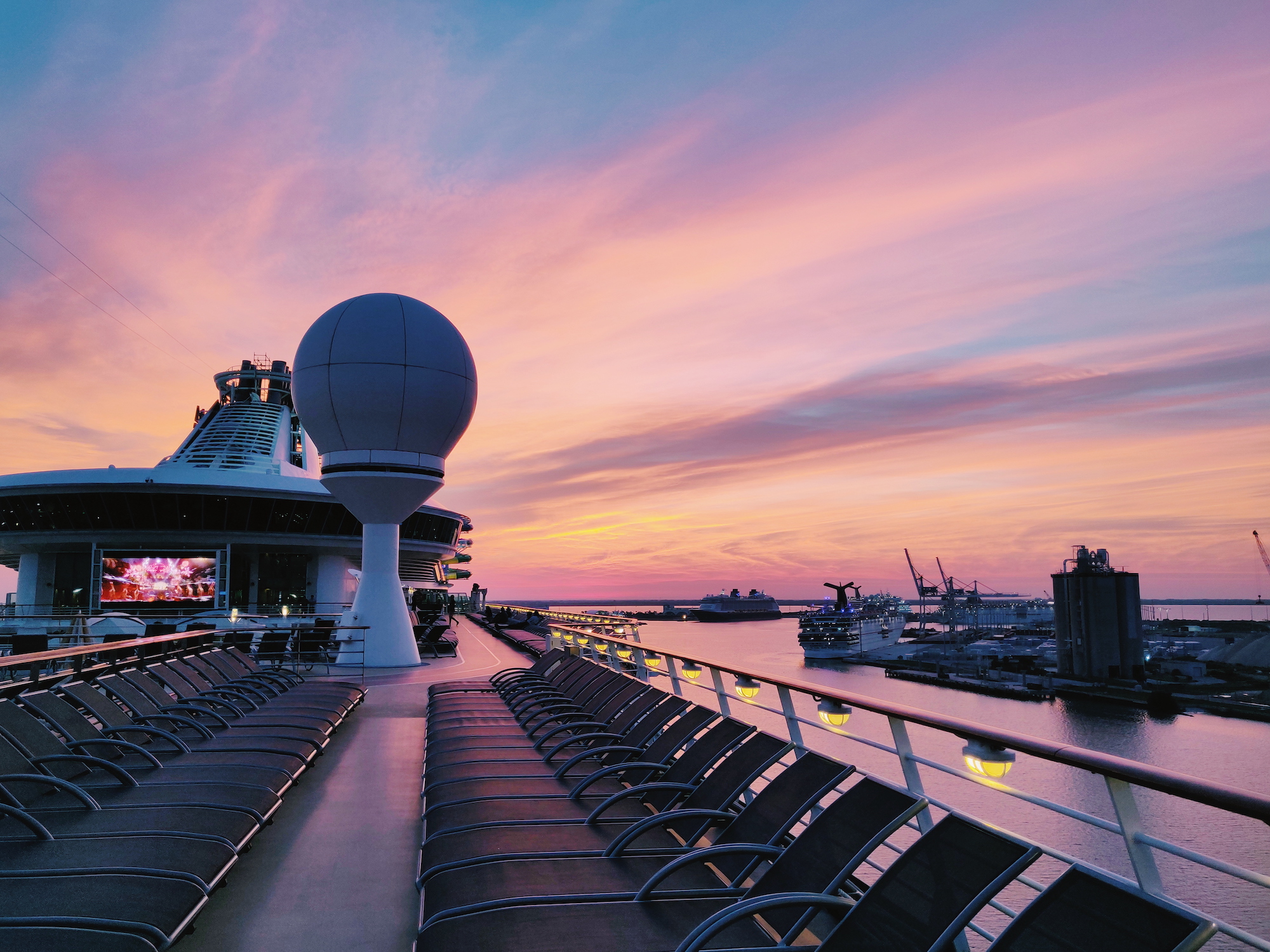
11. International connections
While the majority of cruise guests might be primarily from one or two countries, the crew area is like a small, diverse city with people from dozens of countries.
You work and live with people from all around the world, and it’s such a unique experience to learn about their lives and country through interaction.
After three years at sea, most of my closest friends are from ships and not living in the U.S.
While I can’t just drive a few hours to see them, I have an added incentive to vacation or travel to wherever they live.
12. Charter cruises
Sometimes companies or organizations buy out the entire ship for their employees or events at sea.
The guests’ demographics and atmosphere of the ship varies dramatically compared to typical cruisers.
Charters are always exciting for crew, especially if they’re music festivals.
While your rank dictates how much of the events you can partake in (if at all and more on that later), I’d say 70% of the charter cruises I’ve worked on have been very pleasant with better-than-usual guests.
Also dependent on your job position, sometimes charters are better for you, but also sometimes they’re worse.
As a youth counselor, charters that are adults-only tend to be wilder (that’s another story that will have to wait), but it also means that I get a rare break from the typical childcare duties.
13. You get to be part of meaningful humanitarian work
While being able to provide a guest with an amazing and memorable vacation is of course satisfying, the proudest I’ve ever been to be a crew member working for Royal Caribbean was when we were giving back to communities in need and looking out for our neighbors.
Royal Caribbean and other major cruise lines have a history of providing aid and humanitarian relief in times of disasters, from evacuating hurricane-stricken islands like Puerto Rico and the Bahamas to supporting those affected by wild and bush fires in California and Australia.
During Hurricane Dorian, the ship that I was on (Mariner of the Seas) was called to provide assistance to the Bahamas.
The crew was briefed on the situation and we were informed that we’d be supplying food as well as evacuating as many Bahamians as we could.
Heartwarming: Crew members aboard @royalcaribbean’s Mariner of the Seas are at sea preparing 20,000 meals to deliver to the people of Freeport in the Bahamas Saturday morning. Staff worked all day and prepared the meals overnight on their own time instead of sleeping. @wjxt4 pic.twitter.com/p8hmsGtWRW
— Vic Micolucci WJXT (@WJXTvic) September 7, 2019
Even though most of the packaging of meals took place late at night after everyone had finished work, there was not one crew member complaining about the extra hours of work being put in.
While evacuees were on board, the kids’ program staff was asked to entertain the Bahamian children who were evacuating with their families.
Us staff had divided activities and games to host between us, and I got to help out with face painting the kids.
It turns out though, the children wanted to paint as well, so I ended up letting the kids use me as a human canvas and I was left with some pretty sick body art for the rest of the day.

Especially in a job that can get mundane and frustrating from demanding and sometimes ungrateful guests, these small opportunities where we get to actually do something meaningful makes me happy to work at sea.
14. CV/Resume boost
Working on cruise ships requires a lot of skills that make crew members some of the most eligible employment candidates: international experience and the ability to work with a diverse team; skills in customer service and crisis management; and capable of learning quickly.
Most of all, I think what makes crew members stand out is their mental strength.
It’s not easy to work long hours for months at a time, isolated from land and friends and family.
But if you can do that, there’s not much else you’re not psychologically capable of.
I know that for me, this was the biggest selling point that made me a quick hire to work and live in Antarctica.
Related: How I Got Paid to Live in Antarctica: FAQ About Working on the Ice

Related: What to Pack When Working on a Cruise Ship
The Cons of Working on Cruise Ships
1. There are no days off
On ships, weekends and holidays don’t exist.
You work every day of your entire contract and just have hours off between shifts each day.
On land, you can go hard on a Friday night and have a couple of days to recover.
On ships, you still have to get up and go to work the next day.

2. You work long hours
The most I ever clocked in in a day was about 13 hours, but of course this will vary according to job position and possibly whether or not it’s a busy cruise.
The majority of crew members work anywhere from 9-11+ hours every day, the average amount being on the higher end of the spectrum.
Shifts are also split, so you might start work in the morning and not finish for the day until late at night.
3. Contracts are 4-9 months long
You will get tired and you will feel overworked.
You’ll be away from home for a long while and in that time you will also miss out on a lot of life.
4. You’re on call 24/7
Every crew member is responsible for responding to designated emergencies: medical, fire, security threat, man overboard, etc.
No matter where you are or what time it is, when the announcement is made, you have roughly seven minutes to get to your emergency station.
In the shower? Better get dressed.
On the other side of the ship? Run.
In my three years onboard, I’ve been woken four times in the early morning hours between 2-5 a.m. to my emergency call, which I then had to run up 10 decks and the entire length of the ship to reach my response station.
And once the emergency was over, I still had to go to work at the regularly scheduled time just a few hours later.
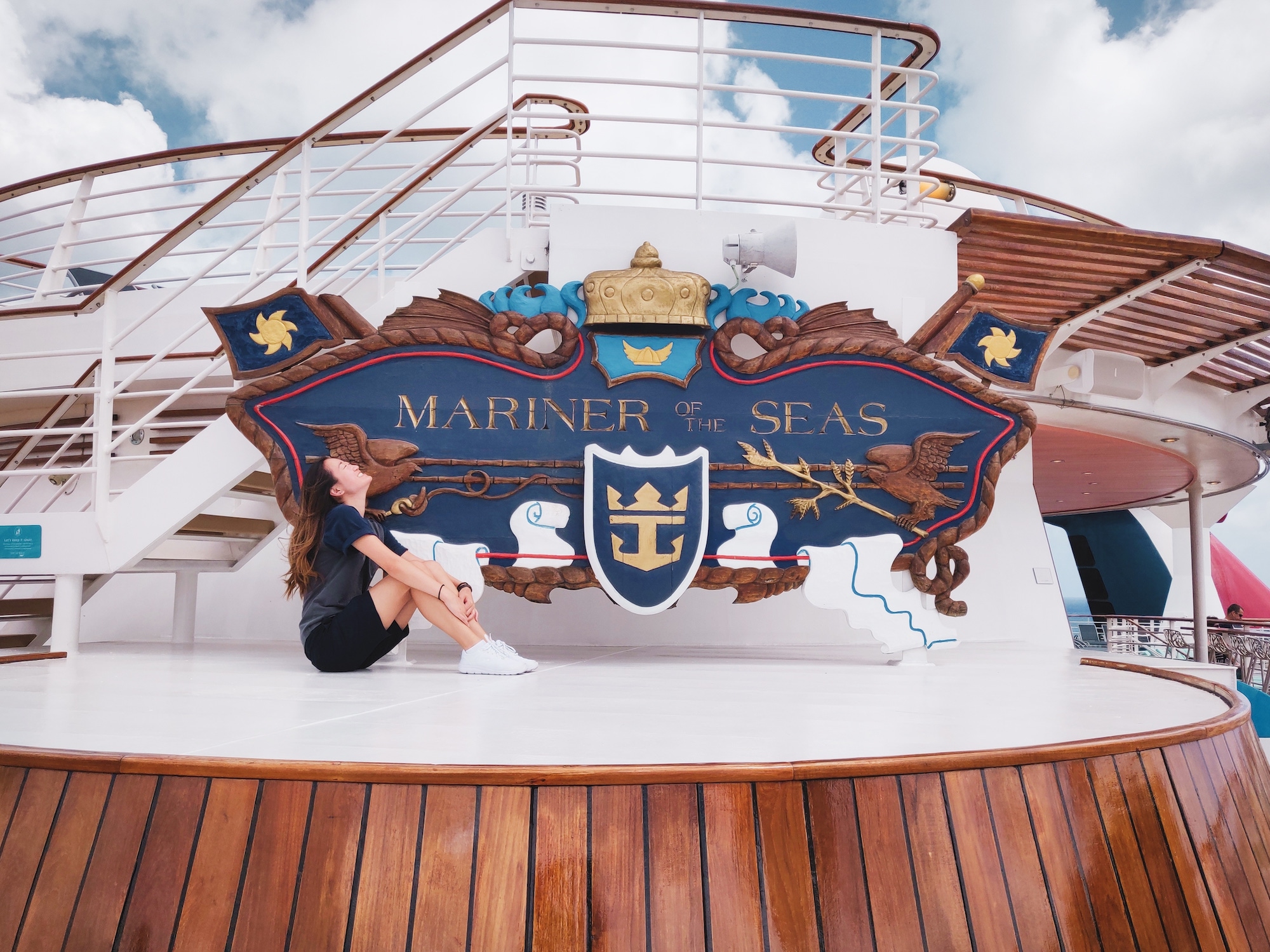
5. Small living quarters
If you think guest cabins are small, wait until you see what crew cabins look like.
Unless you’re a higher ranked staff or officer, your room will be generally small.
Most crew typically live with one other roommate in a cabin that is just large enough for the absolute basics: a bunked bed, a small table with a couple dresser drawers and shelves, two small wardrobe closets, and a restroom where you can shit, shower, and shave all at the same time.
As a 5’2″ fun-sized human who doesn’t mind confined spaces, the small cabins don’t really bother me.
I can fit comfortably on my bed with room to spare.
If you’re any taller or larger than me though, crew cabins can be claustrophobic-inducing and extremely uncomfortable.
6. No privacy
There’s nowhere to hide.
Sure, you have your room, but like I mentioned, you’ll probably have a roommate.
This can be extremely difficult for introverts such as myself especially if your job is a front of the house position.
Luckily, many crew cabins have bunked beds with curtains for each bed so you have your own personal coffin of solitude.

7. It’s like college all over again
With the confined quarters and small community of stressed out humans, you can only imagine how sloppy things get.
All those cruise ship crew hookup stories?
They’re all true and sometimes too horrifically real.
You’ve either walked in on your roommate on they’ve walked in on you.
Sometimes you wake up and your roommate is hooking up in the bunk above you.
8. The food is not the same for crew and guests
Crew members have their own cafeteria (“mess”) separated from guests and even sometimes split between ranks.
Because the majority of crew members tend to be from Asian countries (the Philippines, Indonesia, and India), a lot of the food in the crew mess is catered to their cuisine.
If you’re lucky, some ships will try to include both Asian and Western food options, but it’s not always the case.
9. It’s a bit military-esque
Everything is highly regulated and there are a lot of rules: what you’re allowed to do, where you’re allowed to be, and even what you’re allowed to wear.
There’s a dress code for everything: day, night, formal, smart casual, all black.
Cabins are inspected regularly and beds must be made.
If we fail, our supervisors are notified.
Disciplinary action is super formal: verbal warnings, written warnings, hearings with the master (captain), and dismissal.
Your privileges depend on how many stripes you have (your rank).
There are typically three tiers in the ship social hierarchy: officer, staff (front of the house), and crew (back of the house).
As I mentioned above, some ships have separate messes, one for officers and staff and another for crew.
Depending on how many stripes you have, you may be allowed to be seen around the ship in the public areas such as the shops or eating at one of the restaurants.
10. Crew drills
Every cruise, crew members need to take part in mandatory emergency drills where you have to respond to a simulated incident and answer questions about crisis response protocol.
Sometimes this can last hours, especially if the crew fail to respond properly.
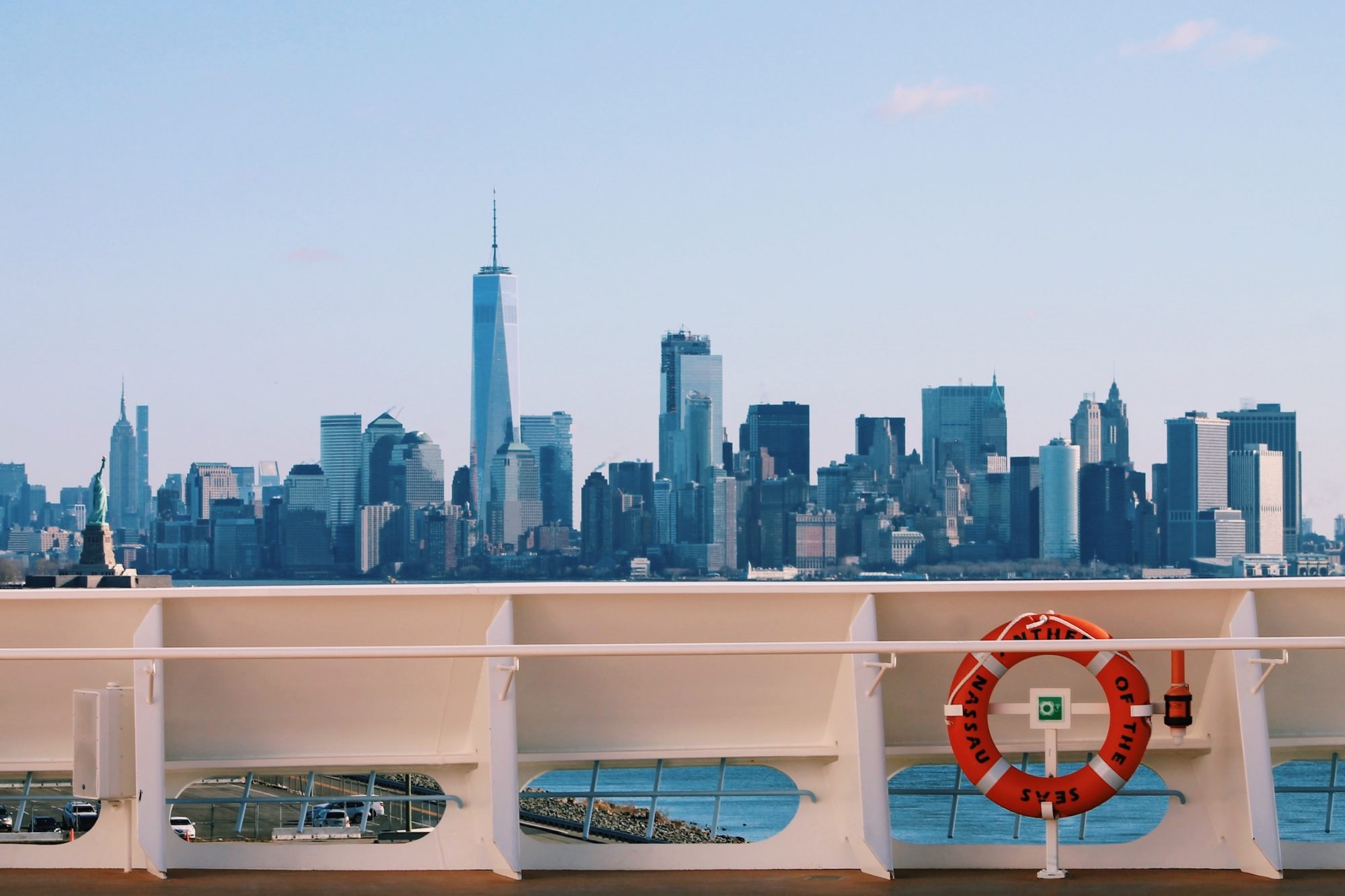
11. Trainings and certifications
If you’re a new hire, expect to spend the entirety of your first few weeks in training courses: basic ship safety, emergency response, evacuation protocol, lifeboat/life raft operations (aka flipping a raft in a pool with a life jacket on while guests watch you), crowd management, security certification, and more.
You’ll need to attend all of these classes in addition to working your actual ship job.
When I was a new hire, I don’t think I had time to get off the ship until the second week.
12. Crew aren’t treated the same as guests
Ever notice that crew members have to go through extra security checks when arriving back onboard, like taking their shoes off and getting a pat-down but guests don’t?
This is because crew are often targeted by locals to smuggle drugs and security is checking to see if we’ve got any contraband on us.
But it’s not just ship security that treats us differently.
Sometimes, unfortunately, local port authorities give us a hard time.
Story time.
This happened when I was in Bermuda and multiple female crew members were stopped at the port security checkpoint by staff who requested a pat-down and weird strip search.
When I was stopped, they separated me from my partner and tried to usher me into a secluded room so that I would be out of public view.
I, set on making a scene in front of everyone, including guests, asked them what they needed to check, and they said they needed me to remove my dress.
They tugged my arm and tried to pull me into the office but I insisted on taking my dress off right there since I was wearing a bikini and I didn’t want to be moved to a secondary location.

They kept trying to convince me to cooperate until I, like the often spiteful child that I am, finally just pulled my dress up to my head like a toddler and asked if that would suffice.
Then they yelled at me for not following directions.

Once back onboard, I’d heard several other crew ladies had refused the antics and weren’t allowed shore leave there for the next few cruises.
While this definitely isn’t the norm, instances like this do happen unfortunately.
13. You’re always “on stage”
Prepare to smile a lot and always be “on” around guests.
Even if you’re off duty and walking through public areas of the ship, you are still a working employee if guests stop you to ask you a question or need help.
14. Customer service on ships can be demanding and is often brutal
I honestly don’t know what it is that makes some cruise guests the worst types of customers I’ve ever encountered, but it’s definitely helped me build up my patience and Resting “Are You Done” Face.
I’ve lost count of how many times I’ve been yelled at for the most trivial things.
I think some guests think that if they make enough of a fuss, they will be rewarded with some discount or compensation.
Ok, I don’t think this is the case, I know it is as I’ve heard more than a few guests laugh about this.
But us crew members build up a tolerance for poor adult behavior and find ways to cope with it, like corralling a parent into a corner akin to a farm animal after they’ve physically pushed you and barged their way into the secured kids’ facility, all while you talk to them like a child until they calm down.
Side note, if you’re a guest anywhere, please be a decent human to people providing you with services.
It’s not that difficult.
15. The seas can be rough
While guests might deal with seasickness by laying down in their cabins, crew members still need to be at their work areas operating the same as usual no matter what the weather or sea conditions are.

16. The air on ships is extremely dry
As guests, you can spend most of your day outside getting fresh air.
Most crew members work inside the ship though, and in addition to living in a floating metal can of recycled air for months on end, the dry air and dust will definitely affect your health.
After a couple of years on ships, my eyes were completely wrecked to the point that I could no longer wear contacts without my eyes turning bloodshot and I had to have laser correction to remove the chapped top layer of my cornea as well as to restore my vision.
You’ve been warned.
17. Ship life affects your hormones and health
Blame it on the recycled air, the desalinated water, the fluctuating food quality, high stress, or close living quarters, but your health may take a hit while working on ships.
Some crew members gain weight, some break out with acne, and I, unfortunately, get my period every other week.
I’ve talked about this before in my post about my experience working with Peace Boat and circumnavigating the globe on a world voyage, but basically, be prepared for your body to change.
Related: How I Cruised Around the World for Free with Peace Boat
18. Internet is limited and expensive
I’ve had so many guests ask me if crew members get free Wi-Fi and the truth is that our internet packages actually tend to be more expensive than the guests’.
On Royal Caribbean, an hour of internet for the crew is USD 4 and expires within 24 hours.
While there are other package options for more time or over an extended period, the price per hour is generally about the same.
19. You rarely have control over your assignments
For many crew positions, you won’t be able to request a specific ship or itinerary for several years.
And even then, your preference request might not be granted.
You usually stay with the same ship for the entirety of your contract but there are cases where you might be abruptly transferred to another ship and there’s nothing you can do about it.
They might not even give you 24 hours’ notice.
20. Long-term relationships are difficult to sustain
Most relationships between crew members are short and limited to the length of the contract.
While it’s not impossible to get a following ship assignment together, it is very difficult and often unlikely.
This of course varies by company, but in my experience, couples need to submit official paperwork that proves they are in a formal, legally binding relationship of some sort and even then there is no guarantee that crew couples can be placed on the same ship.
It used to be easier to produce simple paperwork such as an apartment lease or utility bill with both names on the document to prove your relationship, but rules have since become stricter on many ships.
21. You’re away from family and friends for long periods of time
You end up watching life going on without you through social media: birthdays, weddings, kids growing, pet adoptions, game nights, brunch dates, etc.
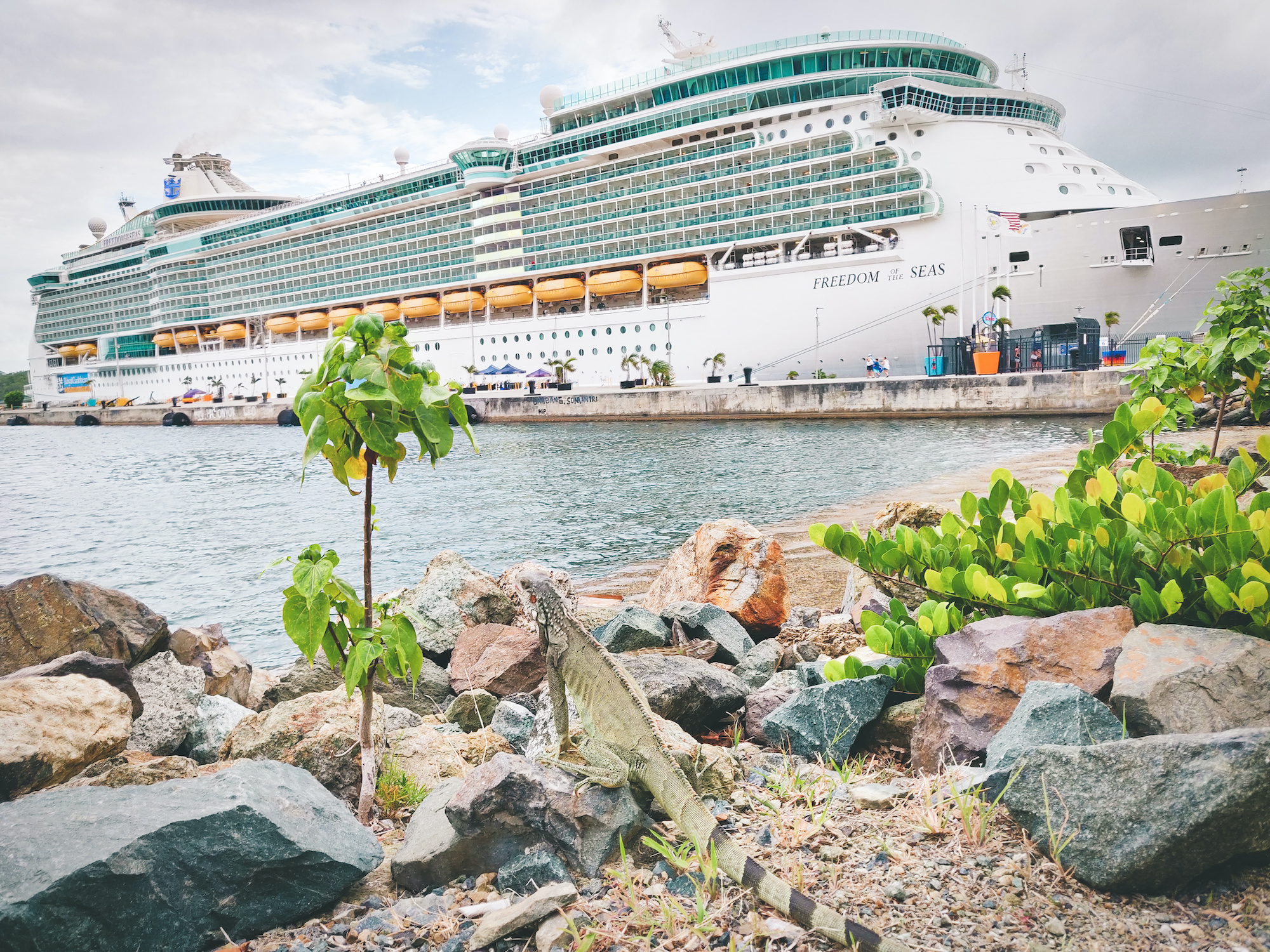
Is Working on a Cruise Ship Worth It?
If you’re willing to put in the work and sacrifice the comforts of life at land, working on a cruise ship offers a lifestyle with travel opportunities you’ll be hard-pressed to find elsewhere.
Of all the jobs I’ve had that paid me to travel or let me see the world for free, my time working on cruise ships is the one chapter in my journey around the world that I look back on the fondest.
There is so much pride in cruise ship crew life, both the work and lifestyle.
While it’s definitely not the easiest travel job, it is the most rewarding.
Pin and Save


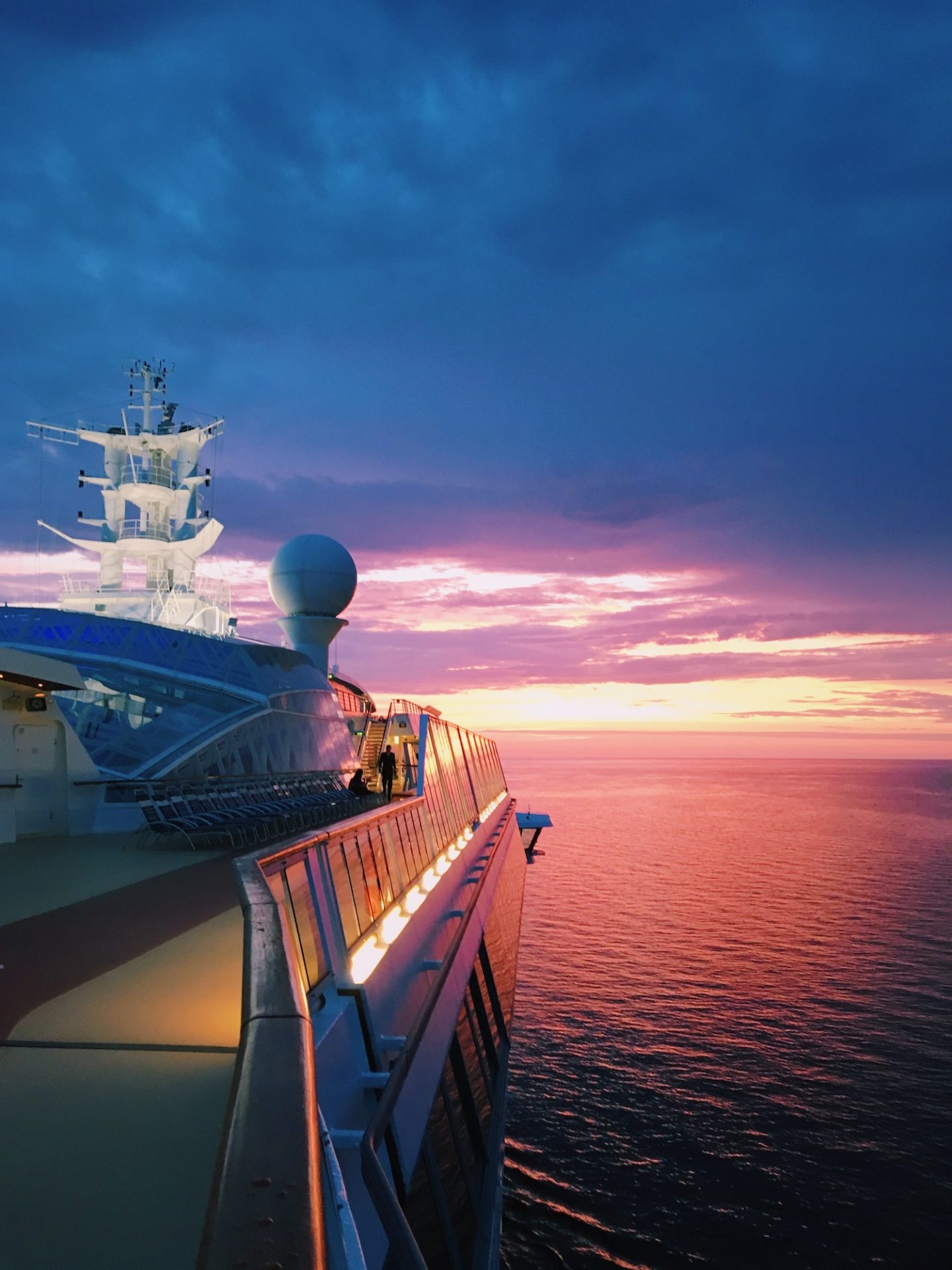




I enjoyed reading this informative yet engaging post. Your mental strength is admirable and I love your honesty here. Thank you for sharing an insight into working on cruise ships.
Thanks for reading! Working on ships definitely takes some mental strength but you get used to– and addicted to– the lifestyle after a while.
Thank you for such a great and informatively written article on your experiences, and life working on a cruise ship, very helpful in my consideration. I appreciate your candor and humor as well.
Glad I could help!
A must read. Very well-written. Shared your article to my students who are cruise ship worker aspirants. 👏🏼☺️ 🛳
Wow, I’m flattered! I hope it’s helpful for them :)
Thank you for sharing your amazing journey! Your authenticity is both inspiring & appreciated.
Beautifully written. You answered many questions I had and even some I didn’t know I had :) I enjoyed your writing. I’ve applied to a few cruise ships. Wish me luck. Think we could possibly keep in touch through email?
Glad I could help and sending positive thoughts your way! Feel free to email me if you have further questions and I’ll do my best to help :)
I really enjoyed the read. I have been looking at what a day into he life would be. I wish I would have done this when I was in my 20s. This would have been perfect and to see the world.
i dont know how i got here but thank you its so informative. I have always wanted to work for cruises and I will safely say am still going to apply for it. hopefully will come back with some nice memories if I get it
Hi Michelle, it was very nice and informative to read your post! You could write novels on life on bord! Thank you for the time it took you to write it.
Solange from London UK
This is extremely well written, informative, and enjoyable!
Love this because it answered questions I had and was written in a warm, relatable way. Great job and thank you.
Glad I could help!
Beautifully written, pros and cons are nicely explained, the way it is written with pictures made me to give a thoght about good and difficult times, this article can be an introduction for those who are thinking about pursuing cruise ship life. cruise ship life is really a hard nut to crack. You are a strong person, wish you happiness and more power to you. I enjoyed reading this article.
Thank you! Cruise ship life definitely has its challenges but I also found it to be a rewarding experience.
Wow. I really appreciate and admire you♥️
Im planning to apply for a cruise after experience of 5 star hotel.
The disadvantage is too hard whether will i be able to fit. However, im gonna try since it’s my dream to work at cruise🙂
Thankyou so much you gave me alot knowledge about cruise♥️
I stumbled across your stories when I Googled crew life aboard a cruise ship. I will be joining the Pride of America ship with Norwegian Cruise Lines as soon as my MMC credentials have been completed.
You are so detailed and the added photos have made this so enjoyable to read and your knowledge has helped me tremendously. Especially with what I need to pack, prohibited items etc.
Thank you for sharing your knowledge and experiences with all of us!
I am very much looking forward to my life living and working on a cruise ship as a Bartender.
Hey!!!! This was a really great article and really helped with the questions I always had about cruise ship job. Thank you so much!
OMG I am so happy I found you. I will start my first contract in April. And this definitely helped me a lot. I wonder if you have a list of what to bring on board or some tips on what to pack. Thank you
Happy to help! Here’s an article I have for what to pack when working on a cruise ship.
Thanks for this interesting, well-written, behind-the-scenes look at working on a cruise ship!
Thoroughly enjoyed your stories and your views, great enlightenment on what to expect and what are the highlights and restrictions that you cover.
Keep writing